We may not have the course you’re looking for. If you enquire or give us a call on 01344203999 and speak to our training experts, we may still be able to help with your training requirements.
Training Outcomes Within Your Budget!
We ensure quality, budget-alignment, and timely delivery by our expert instructors.
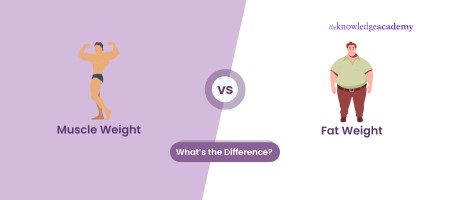
When initiating a new resistance training programme, you may observe an increase in body size and weight. Well-intentioned friends might suggest that this weight gain stems from Muscle development, but it may not always be the case; some of the additional weight could be attributable to Fat. Muscle and Fat weight are crucial for individuals aiming to achieve specific fitness goals, as they guide strategies for effective weight management.
So, what distinguishes Muscle from Fat? Muscles are contractile, driving bodily movements and exerting force, and they are more metabolically active, burning more calories than Fat. Additionally, Muscle is denser, occupying less space in the body than an equivalent amount of fat. Read more to learn more about the differences between Muscle vs Fat!
Table of Contents
1) What are the differences between Muscle and Fat?
2) Signs of Muscle gain
3) Signs of Fat gain
4) Key tips for increasing Muscle mass
5) Key tips for losing weight
6) Conclusion
What are the differences between Muscle and Fat?
Muscle and Fat are distinct tissues with varying functions. Muscle, composed of contractile fibres, facilitates movement and provides strength, while Fat serves as an energy store. Metabolically active Muscles contribute significantly to calorie burning, aiding weight management. In contrast, Fat, an inert storage unit, does not actively participate in metabolic processes. Notably, Muscle is denser than fat, occupying less space and influencing body composition. Visible differences include Muscle definition and tone, while Fat gain often leads to increased body size. Recognising these disparities is crucial for understanding and optimising overall health and fitness.
Muscle contracts, while Fat does not
Muscles and Fat, critical components of the human body, exhibit distinct characteristics that contribute to their respective roles. Muscles are dynamic tissues capable of contracting, enabling movement and providing essential strength. In contrast, while serving as a valuable energy reservoir, Fat remains inert and lacks the contractile properties seen in Muscles. This fundamental dissimilarity underscores the diverse functions these tissues perform within the body.
Metabolic activity
Another pivotal contrast lies in metabolic activity. Muscles are metabolically active tissues that significantly contribute to the body's energy expenditure. Their engagement in metabolic processes makes Muscles vital players in maintaining a healthy weight and overall metabolic balance. On the other hand, although storing energy efficiently, Fat does not actively participate in metabolic activities to the same extent as Muscles. This distinction has profound implications for those seeking to understand and optimise their body composition.
Density dynamics
Beyond functionality, Muscle and Fat differ in their density. Muscle tissue is more compact and occupies less space than an equivalent Fat weight. This density dynamic becomes crucial when considering the impact on body shape and overall appearance. Gaining Muscle can lead to a more toned and defined physique, thanks to its denser nature than Fat.

Signs of Muscle gain
The following are the signs of Muscle gain:
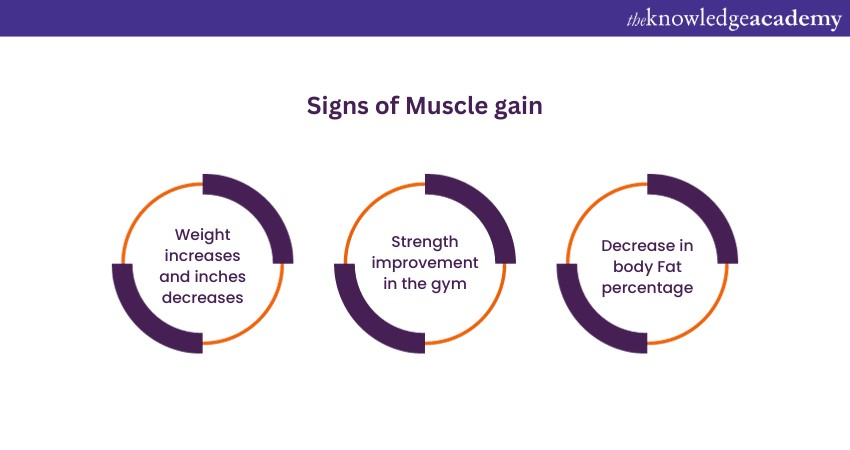
1) Weight increases, inches decreases
The paradox of Muscle gain often involves a shift in the numbers on the scale. As Muscles grow denser and more substantial, there might be an increase in overall body weight. This can be attributed to the added Muscle mass, which, pound for pound, occupies less space than Fat. Simultaneously, keen observers may notice a decrease in inches around certain areas of the body, particularly the waist. This phenomenon signifies a positive shift in body composition, emphasising the importance of looking beyond the scale to assess progress accurately.
2) Strength improvement in the gym
One of the most rewarding signs of Muscle gain manifests in the gym. As Muscles adapt and strengthen, individuals often experience a tangible increase in strength levels. This can be observed through lifting heavier weights, performing more repetitions, or sustaining more extended and intense workout sessions. Strength improvement indicates that the Muscles respond positively to the training stimulus, reinforcing that the body is undergoing a transformative process.
3) Decrease in body Fat percentage
A notable and often celebrated sign of Muscle gain is a concurrent decrease in body Fat percentage. This occurs as the body becomes more metabolically active, efficiently utilising calories to fuel Muscle-building. The result is a leaner physique characterised by a reduction in adipose tissue. Monitoring changes in body Fat percentage provides valuable insights into the Muscle-building regimen's effectiveness, emphasising the transformation's holistic nature.
Improve your Nutrition and health with our Nutrition and Fitness Training - sign up now!
Signs of Fat gain
The following are the signs of Fat gain:
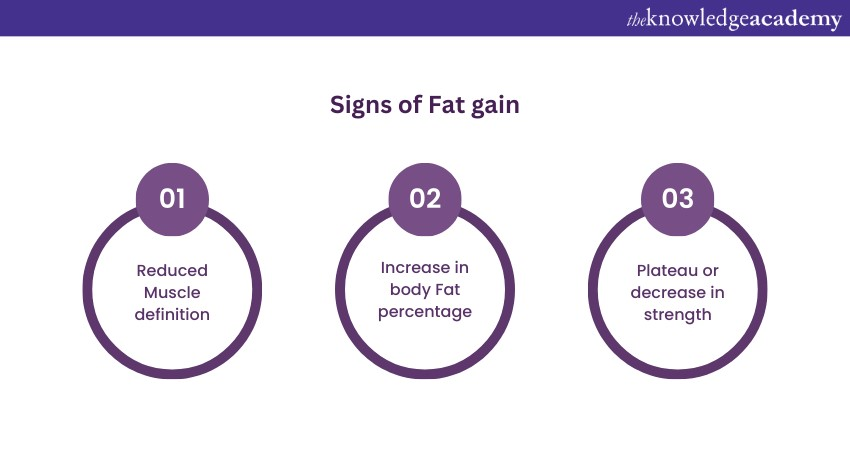
1) Reduced Muscle definition
One of the most noticeable signs of Fat gain is the reduction in Muscle definition. As Fat accumulates, it tends to mask the contours of Muscles, making them less visible. Areas that were once defined and toned may lose their sharpness, signalling a shift in the body's composition.
2) Increase in body Fat percentage
Monitoring body Fat percentage is a crucial metric for assessing changes in body composition. An increase in body Fat percentage indicates a higher proportion of Fat relative to total body weight. This metric is crucial for understanding the impact of lifestyle choices on overall health and can serve as a wake-up call for individuals aiming to maintain a healthy weight.
3) Plateau or decrease in strength
Fat gain can negatively impact physical performance, leading to a plateau or even a decrease in strength levels. Excess body Fat does not contribute significantly to enhanced physical capabilities. Individuals may find lifting heavy weights, performing strenuous exercises, or sustaining high-intensity workouts more challenging, highlighting the importance of maintaining a balanced and active lifestyle.
Are you eager to learn about essential life lessons? Sign up now for our Life Coach Masterclass!
Key tips for increasing Muscle mass
Achieving significant Muscle growth is a multifaceted endeavour beyond lifting weights in the gym. It requires a comprehensive approach encompassing nutrition, exercise, rest, and hydration. The following provides a detailed exploration of the critical tips for increasing Muscle mass:
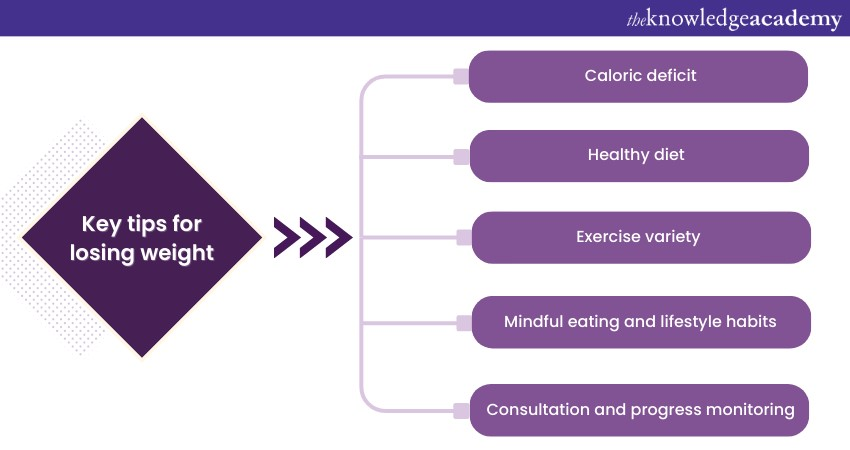
Balanced diet
A balanced and nutrient-rich diet is the cornerstone of any effective Muscle-building strategy. Protein plays a pivotal role in Muscle synthesis. Ensure your diet includes lean protein sources such as chicken, fish, lean beef, eggs, and plant-based options like legumes and tofu. Proteins provide the building blocks (amino acids) necessary for repairing and building new Muscle tissue.
Resistance training
Engaging in regular and structured resistance training is fundamental for stimulating Muscle growth. Compound exercises, such as squats, deadlifts, bench presses, and rows, target multiple Muscle groups simultaneously, maximising the efficiency of your workouts. Gradually increase the resistance (weight) over time to continually challenge your Muscles and promote adaptation.
Adequate rest
Muscles don't grow during workouts; they grow during the recovery phase. Adequate rest is imperative for the repair and growth of Muscle tissue. Ensure that you get enough sleep each night, as this is when the body releases growth hormones and facilitates the regeneration of tissues.
Hydration
Proper hydration is often underestimated in its impact on Muscle growth and overall health. Water is essential for various physiological processes, including nutrient transport, temperature regulation, and waste elimination. During intense workouts, you lose fluids through sweat, making it crucial to stay hydrated.
Key tips for losing weight
Losing weight involves a combination of mindful eating, regular physical activity, and a sustainable lifestyle. The following are vital tips for those aiming to shed excess weight:
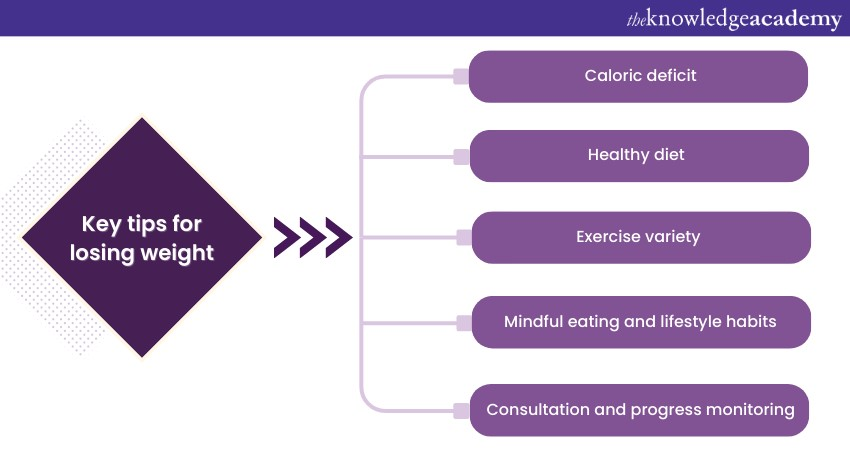
Caloric deficit
1) Calculate Basal Metabolic Rate (BMR): Determine your BMR, which is the number of calories your body needs at rest. Several online calculators can help with this.
2) Create a caloric deficit: Consume fewer calories than your body expends. Aim for a moderate deficit to promote weight loss without compromising essential nutrients.
3) Track caloric intake: Use food journals or mobile apps to monitor your daily intake. This awareness is crucial for maintaining a sustainable caloric deficit.
Healthy diet
1) Emphasise whole foods: Prioritise a diet rich in whole, unprocessed foods. Fruits, vegetables, lean proteins, whole grains, and healthy Fats should form the basis of your meals.
2) Control portion sizes: Be mindful of portion sizes to avoid overeating. Consider using smaller plates and bowls to help regulate portions visually.
3) Stay hydrated: Drink an adequate amount of water throughout the day. Sometimes, the body can mistake thirst for hunger, leading to unnecessary calorie consumption.
Exercise variety
1) Cardiovascular exercises: Incorporate a mix of activities like running, cycling, swimming, or brisk walking. Aim for at least 150 minutes of moderate-intensity aerobic exercise per week.
2) Strength training: Include resistance exercises to build and maintain Muscle mass. Perform strength training exercises at least two to three times per week.
3) High-Intensity Interval Training (HIIT): Integrate HIIT workouts to boost metabolism and enhance calorie burn. Short bursts of intense exercise and brief rest periods can be highly effective.
Mindful eating and lifestyle habits
1) Limit liquid calories: Be cautious of calorie-laden beverages. Opt for water, herbal tea, or black coffee instead of sugary drinks.
2) Get adequate sleep: Aim for 7-9 hours of quality sleep per night. Poor sleep can disrupt hormones that regulate hunger and satiety.
3) Manage stress: Implement stress-reducing techniques such as meditation, deep breathing, or engaging in activities you enjoy. Elevated stress levels can contribute to emotional eating.
Consultation and progress monitoring
1) Seek professional guidance: Consult healthcare professionals or registered dietitians for personalised advice. They can provide tailored recommendations based on your health status and goals.
2) Regular progress assessments: Track your progress using metrics like weight, body measurements, and changes in fitness levels. Adjust your approach based on these assessments.
3) Celebrate non-scale victories: Acknowledge achievements beyond the scale, such as improved energy levels, enhanced mood, or comfortable clothing fitting.
Do you want to gain in-depth knowledge about Nutrition to improve your physical well-being? Sign up now for our Nutrition Training!
Conclusion
Understanding the distinctions between Muscle and Fat is pivotal for anyone embarking on a fitness journey. While weight gain may occur with the initiation of a resistance training program, discerning whether it stems from muscle or fat is crucial. We hope you understood the differences between Muscle vs Fat through this blog!
Learn how to build a healthy life with our Active and Healthy Lifestyles Training - join now!
Frequently Asked Questions
Upcoming Health & Safety Resources Batches & Dates
Date
 Active and Healthy Lifestyles Training
Active and Healthy Lifestyles Training
Fri 31st May 2024
Fri 23rd Aug 2024
Fri 29th Nov 2024







 Top Rated Course
Top Rated Course


 If you wish to make any changes to your course, please
If you wish to make any changes to your course, please


